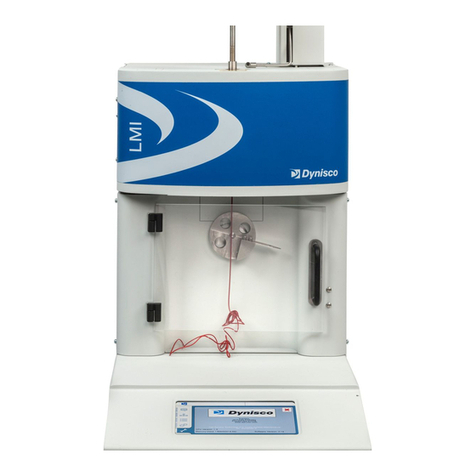
LCR7000 & RHEOSIGHTS P/N: 974194 | Rev: A| ECO: 52468
www.dynisco.com
providing a window into the process
Contents
Introduction ............................................................................................................................................................5
Getting Started .......................................................................................................................................................7
Safety ...................................................................................................................................................................... 14
Test Drive.............................................................................................................................................................. 20
RheoSights Operations..................................................................................................................................... 23
Set Up Test Page ................................................................................................................................................. 25
HAMA Laser Micrometer................................................................................................................................. 33
Rheometer Control Screen ............................................................................................................................. 35
Plotting and Analyzing your Data................................................................................................................ 37
Built-in Functionalities of the Graphing Tool................................................................................ 38
RheoSights Reports........................................................................................................................................... 47
Formulas Used in Data Analysis................................................................................................................... 54
Apparent Shear Rate Calculation: ...................................................................................................... 54
Apparent Shear Stress Calculation: ................................................................................................... 54
Apparent Shear Viscosity ...................................................................................................................... 55
Volumetric Flow Rate Calculation: .................................................................................................... 55
Mass Flow Rate Calculation:................................................................................................................. 56
Introduction to Rheology................................................................................................................................ 57
Simple Shear Deformation.................................................................................................................... 57
Viscosities of some Common Materials ............................................................................................... 62
......................................................................................................................................................................... 62
Pseudoplastic ............................................................................................................................................. 63
Dilatant......................................................................................................................................................... 63
Thixotropic.................................................................................................................................................. 63
Rheopectic................................................................................................................................................... 63
Where: ηis viscosity, τis the shear stress and γis the shear rate.................................................. 64
Advantages of a pressure transducer................................................................................................... 67
Disadvantages of a pressure transducer ............................................................................................ 67
Maintenance and Calibration ........................................................................................................................ 71
Galaxy ..................................................................................................................................................................... 87































